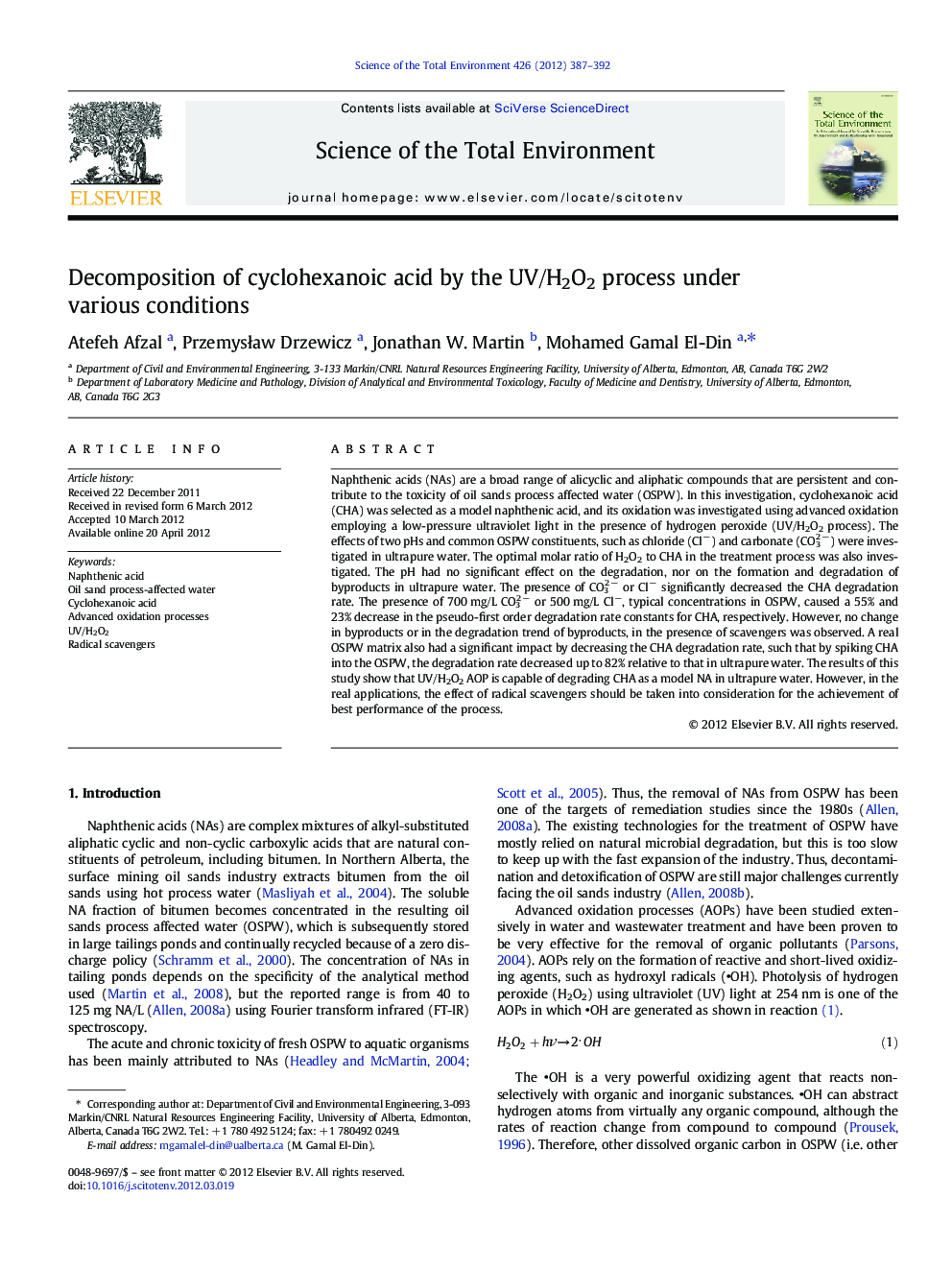| کد مقاله | کد نشریه | سال انتشار | مقاله انگلیسی | نسخه تمام متن |
|---|---|---|---|---|
| 4429493 | 1619825 | 2012 | 6 صفحه PDF | دانلود رایگان |

Naphthenic acids (NAs) are a broad range of alicyclic and aliphatic compounds that are persistent and contribute to the toxicity of oil sands process affected water (OSPW). In this investigation, cyclohexanoic acid (CHA) was selected as a model naphthenic acid, and its oxidation was investigated using advanced oxidation employing a low-pressure ultraviolet light in the presence of hydrogen peroxide (UV/H2O2 process). The effects of two pHs and common OSPW constituents, such as chloride (Cl−) and carbonate (CO32 −) were investigated in ultrapure water. The optimal molar ratio of H2O2 to CHA in the treatment process was also investigated. The pH had no significant effect on the degradation, nor on the formation and degradation of byproducts in ultrapure water. The presence of CO32 − or Cl− significantly decreased the CHA degradation rate. The presence of 700 mg/L CO32 − or 500 mg/L Cl−, typical concentrations in OSPW, caused a 55% and 23% decrease in the pseudo-first order degradation rate constants for CHA, respectively. However, no change in byproducts or in the degradation trend of byproducts, in the presence of scavengers was observed. A real OSPW matrix also had a significant impact by decreasing the CHA degradation rate, such that by spiking CHA into the OSPW, the degradation rate decreased up to 82% relative to that in ultrapure water. The results of this study show that UV/H2O2 AOP is capable of degrading CHA as a model NA in ultrapure water. However, in the real applications, the effect of radical scavengers should be taken into consideration for the achievement of best performance of the process.
► Naphthenic acids (NAs) are the most toxic constituents in oil sand process water.
► Cyclohexanoic acid is a simple model NA compound studied in this research.
► Cyclohexanoic was degraded using UV/H2O2 treatment and some byproducts were formed.
► pH has no effect on the treatment efficiency in ultrapure water.
► Chloride and carbonate ions decreased the efficiency of treatment.
Journal: Science of The Total Environment - Volume 426, 1 June 2012, Pages 387–392